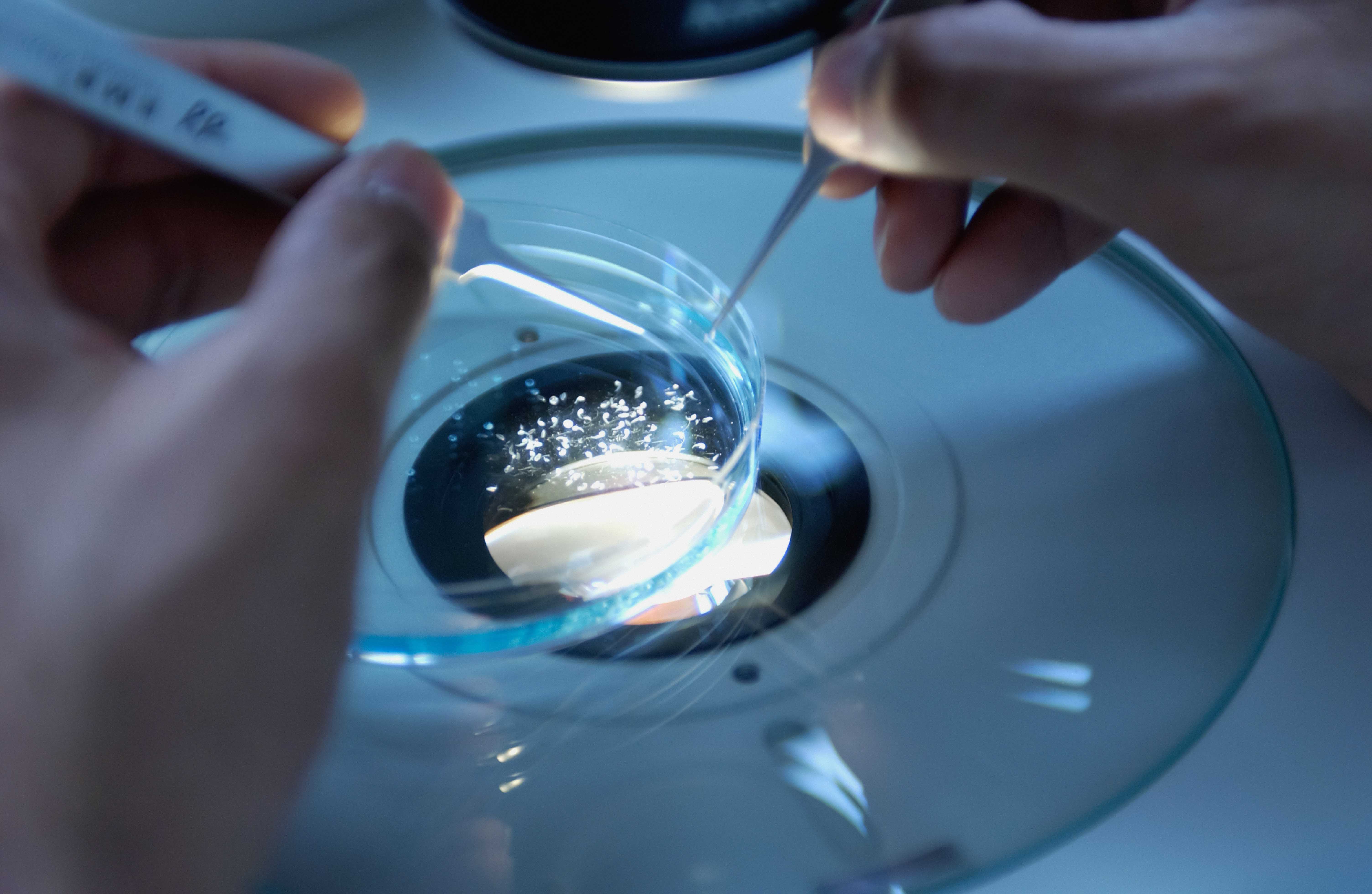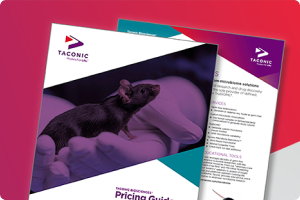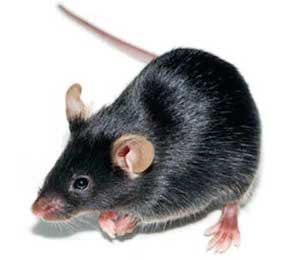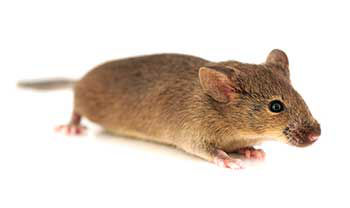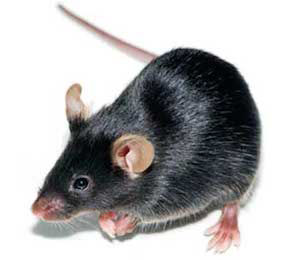| Model No. | Nomenclature | Genotype |
|---|---|---|
| 16347-F | C57BL/6NTac.CBA-Tg(Thy1-PSEN1*M146V,-APP*Swe)10Arte | tg/tg |
| 16347-M | C57BL/6NTac.CBA-Tg(Thy1-PSEN1*M146V,-APP*Swe)10Arte | tg/tg |
ARTE10 (APP-PS1)
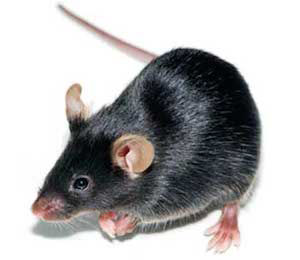
- Description
- Price & Licensing
- Health Report
- Overview
- Genetics
- Guides & Publications
- Applications & Therapeutic Areas
- Transit, Housing & Welfare
- Diet
Overview
Nomenclature: C57BL/6NTac.CBA-Tg(Thy1-PSEN1*M146V,-APP*Swe)10Arte
- Transgenic line with two co-integrated constructs: Thy-1 promoter specific expression the transgene coding for the 695-amino acid isoform that harbors the Swedish mutation of human Alzheimer β-amyloid (Aβ) precursor protein, as well as human Presenilin 1 carrying the M146V mutation (PS1M146V).
- Expresses high concentrations of human Aβ protein and develops human AD-like amyloid pathology due to genetic mutations within the human APP and PSEN1 genes. Aβ42 is the predominant insoluble species in this model.
- ARTE10 is an appropriate preclinical model for prolonged evaluation of amyloid-lowering therapies and has been successfully PET imaged in vivo and ex vivo using Pittsburgh compound B (PiB) tracers.
- This model develops cerebral β-amyloidosis that mimics several β-amyloid characteristics of human AD neuropathology, which is associated with glial inflammation. The neuropathology is reported to progress rapidly and predictably, with up to 100%-penetrance and low inter-animal variability reported. In animals with advanced plaque deposition, cerebral amyloid angiopathy is also present.
- Pattern and sequence of Aβ deposition: Aβ plaque formation first occurs in the anterior neocortex and subiculum in both homozygous and hemizygous animals as early as 3-months and 5-months respectively.
- Quantification of Aβ plaque: Plaque load progressively increases with age of onset, rate, and maximum level of plaque deposition, which are transgene dose-related. Homozygous animals have higher amounts of both insoluble and soluble Aβ levels in the brain then hemizygous animals.
- Sex differences in either homo- or hemizygous animals with regards to Aβ pathology have not been reported in this line.
- The homozygous & hemizygous ARTE10 animals are reported to possess a relatively low rate of premature mortality (15% and 0% at 12 months, respectively) with expected life expectancy beyond 20 months. At Taconic Biosciences, we have observed limited mortality post-weaning in the breeding colony, with some incidence of a tremor phenotype.
Orders by weight: Taconic cannot accept orders by weight for this model. Please note that shipments may contain animals with a larger weight variation.
Genetic Background: C57BL/6NTac background. The ARTE10 model was backcrossed to C57BL/6NTac and is 100% congenic.
Origin
Genetics
Guides & Publications
Initial Publication: Willuweit A.; Velden J.; Godemann R.; Manook A.; Jetzek F.; Tintrup H.; Kauselmann G.; Zevnik B.; Henriksen G.; Drzezga A.; Pohlner J.; Schoor M.; Kemp J.A.; von der Kammer H. (2009) Early-Onset and Robust Amyloid Pathology in a New Homozygous Mouse Model of Alzheimer’s Disease. PLoS ONE. 4 (11), e7931.
Other Publications:
- Manook, A.; Yousefi, B. H.; Willuweit, A.; Platzer, S.; Reder, S.; Voss, A.; Huisman, M.; Settles, M.; Neff, F.; Velden, J.; Schoor, M.; Kammer, H. V. D.; Wester, H.-J.; Schwaiger, M.; Henriksen, G.; Drzezga, A. Small-Animal PET Imaging of Amyloid-Beta Plaques with [11C]PiB and Its Multi-Modal Validation in an APP/PS1 Mouse Model of Alzheimers Disease. PLoS ONE 2012, 7 (3).
- Watanabe, T.; Hikichi, Y.; Willuweit, A.; Shintani, Y.; Horiguchi, T. FBL2 Regulates Amyloid Precursor Protein (APP) Metabolism by Promoting Ubiquitination-Dependent APP Degradation and Inhibition of APP Endocytosis. Journal of Neuroscience 2012, 32 (10), 3352–3365.
- Yousefi, B. H.; Manook André; Drzezga, A.; Reutern, B. V.; Schwaiger, M.; Wester Hans-Jürgen; Henriksen, G. Synthesis and Evaluation of11C-Labeled Imidazo[2,1-b]Benzothiazoles (IBTs) as PET Tracers for Imaging β-Amyloid Plaques in Alzheimer’s Disease. Journal of Medicinal Chemistry 2011, 54 (4), 949–956.
- Yousefi, B. H.; Drzezga, A.; Reutern, B. V.; Manook, A.; Schwaiger, M.; Wester, H.-J.; Henriksen, G. A Novel 18F-Labeled Imidazo[2,1-b]Benzothiazole (IBT) for High-Contrast PET Imaging of β-Amyloid Plaques. ACS Medicinal Chemistry Letters 2011, 2 (9), 673–677.
- Yousefi, B. H.; Manook, A.; Reutern, B. V.; Schwaiger, M.; Drzezga, A.; Wester, H.-J.; Henriksen, G. Development of an Improved Radioiodinated 2-Phenylimidazo[1,2-a]Pyridine for Non-Invasive Imaging of Amyloid Plaques. MedChemComm 2012, 3 (7), 775.
- Šišková, Z.; Justus, D.; Kaneko, H.; Friedrichs, D.; Henneberg, N.; Beutel, T.; Pitsch, J.; Schoch, S.; Becker, A.; Von Der Kammer, H.; Remy, S. Dendritic Structural Degeneration Is Functionally Linked to Cellular Hyperexcitability in a Mouse Model of Alzheimer’s Disease. Neuron 2014, 84 (5), 1023–1033.
Applications & Therapeutic Areas
- "Alzheimers Disease"
- Genetically Humanized
- Neuroscience
Transit, Housing & Welfare
Need more info? Click the live chat button or Contact Us
Packing Practices
Taconic standard practice is to recombine animals of different home cages and/or ages from a single model and sex during packing, except in specific cases where Taconic's animal welfare policy prohibits recombination due to aggression or other concerns. When an order is fulfilled with animals from more than one week of birth, this standard practice results in animals from a range of birth weeks packed together in a single TTC. When an order is fulfilled with animals from genotyped models, this standard practice results in animals from different home cages packed together in a single TTC.
Customers who wish to keep animals from different weeks of birth separated should place orders with the special instruction "Divide and label by age." Note that this special request can result in increased costs for additional Taconic Transit Cages, dividers and/or freight charges.
Taconic discourages other types of custom packing requests as they can have a negative impact on animal welfare. Learn more.
Diet
- Licensing
- Pricing - USD
- Pricing - EUR
- Pricing - USD Nonprofit
- Pricing - EUR Nonprofit
- Select my Health Standard
- Get Custom Pricing Guide
ARTE10 (APP-PS1)
Conditions of Use for Taconic Transgenic Models™
Taconic Transgenic Models™ (Models) are produced and distributed under rights to patents and intellectual property licensed from various institutions. Taconic sells the Models to purchasers, grants to each purchaser a right under Taconic's rights in such licensed patents and intellectual property to use the purchased Model in consideration of purchasers' acknowledgement of and agreement to the Terms and Conditions for Taconic Models, Products and Services and the following terms of use:
- Title to these Models and biological materials derived from them remains with Taconic.
- The Models will be used for research purposes only.
- The Models will not be bred or cross-bred except to obtain embryos or fetuses required for research purposes unless additional rights have been granted in writing by Taconic.
- The Models and biological materials derived from them will not be distributed to third parties or used for commercial purposes.
- Non-profit purchasers may not use this Model and/or biological materials derived from it in sponsored research or contract research studies unless it is purchased at the for-profit price.
Pricing - USD
Murine Pathogen Free (MPF) Health Standard
16347 Female
16347-F Genotype tg/tg
| Age in Weeks | Quantity 1 - 999 |
| 3 to 12 | $513.00 |
| 13 to 28 | $580.00 |
| 29 to 60 | $643.00 |
Specialized Inventory
| 16347-RF Genotype tg/tg | Quantity 1 - 199 |
| Retired Female Breeder | $643.00 |
16347 Male
16347-M Genotype tg/tg
| Age in Weeks | Quantity 1 - 999 |
| 3 to 12 | $513.00 |
| 13 to 28 | $536.00 |
| 29 to 60 | $643.00 |
Specialized Inventory
| 16347-RM Genotype tg/tg | Quantity 1 - 199 |
| Retired Male Breeder | $643.00 |
Pricing - EUR
Murine Pathogen Free (MPF) Health Standard
16347 Female
16347-F Genotype tg/tg
| Age in Weeks | Quantity 1 - 999 |
| 3 to 12 | €479,00 |
| 13 to 28 | €540,00 |
| 29 to 60 | €599,00 |
Specialized Inventory
| 16347-RF Genotype tg/tg | Quantity 1 - 199 |
| Retired Female Breeder | €599,00 |
16347 Male
16347-M Genotype tg/tg
| Age in Weeks | Quantity 1 - 999 |
| 3 to 12 | €479,00 |
| 13 to 28 | €540,00 |
| 29 to 60 | €605,00 |
Specialized Inventory
| 16347-RM Genotype tg/tg | Quantity 1 - 199 |
| Retired Male Breeder | €599,00 |
Pricing - USD Nonprofit
Murine Pathogen Free (MPF) Health Standard
16347 Female
16347-F Genotype tg/tg
| Age in Weeks | Quantity 1 - 999 |
| 3 to 12 | $262.00 |
| 13 to 28 | $329.00 |
| 29 to 60 | $393.00 |
Specialized Inventory
| 16347-RF Genotype tg/tg | Quantity 1 - 199 |
| Retired Female Breeder | $393.00 |
16347 Male
16347-M Genotype tg/tg
| Age in Weeks | Quantity 1 - 999 |
| 3 to 12 | $262.00 |
| 13 to 28 | $329.00 |
| 29 to 60 | $393.00 |
Specialized Inventory
| 16347-RM Genotype tg/tg | Quantity 1 - 199 |
| Retired Male Breeder | $393.00 |
Pricing - EUR Nonprofit
Murine Pathogen Free (MPF) Health Standard
16347 Female
16347-F Genotype tg/tg
| Age in Weeks | Quantity 1 - 999 |
| 3 to 12 | €245,00 |
| 13 to 28 | €306,00 |
| 29 to 60 | €365,00 |
Specialized Inventory
| 16347-RF Genotype tg/tg | Quantity 1 - 199 |
| Retired Female Breeder | €365,00 |
16347 Male
16347-M Genotype tg/tg
| Age in Weeks | Quantity 1 - 999 |
| 3 to 12 | €245,00 |
| 13 to 28 | €306,00 |
| 29 to 60 | €365,00 |
Specialized Inventory
| 16347-RM Genotype tg/tg | Quantity 1 - 199 |
| Retired Male Breeder | €365,00 |
Select my Health Standard
Need help choosing the right Taconic Biosciences health standard for your research?
Use the Health Standard Selector to enter your exclusion list. The tool will tell you which health standards meet your requirements.
Get custom pricing guide
Schedule A Scientific Consultation
Speak with a PhD-level Field Application Scientist who can help you select the most appropriate model and maximize your experimental success.
Related Models
Smart Select Program
Trial an Animal Model for Quality & Compatibility Assurance
As longtime facilitators of animal-based research, we understand the importance of aligning your project goals and procurement priorities to support advancements in your research.
- Evaluate a specific model strain, before making any financial investment
- Request up to 20 animals from one of the strains listed below, to test for quality, consistency, and suitability for your experimental purpose
- Enjoy free ground shipping, where applicable (see table for more details)*






.jpg)
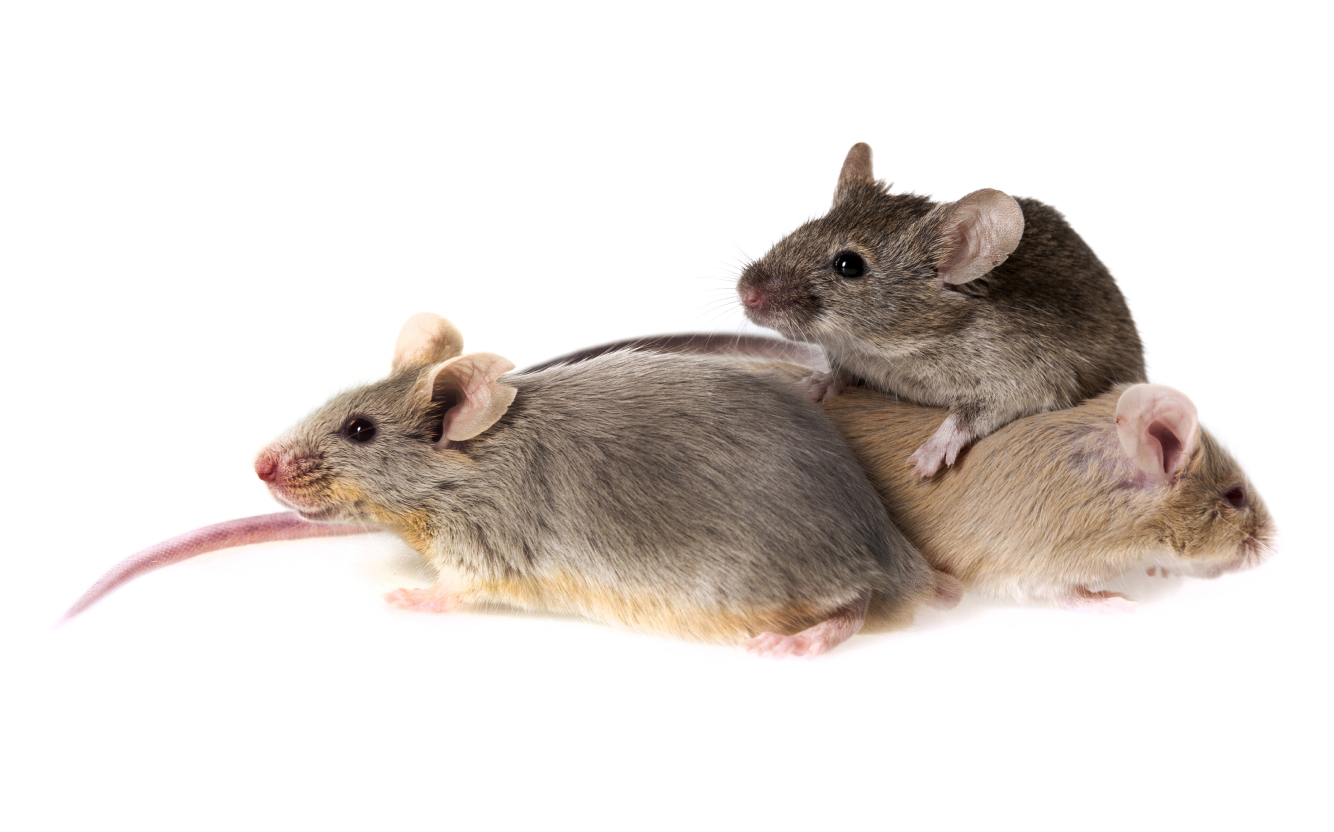
.jpg)
.jpg)
.jpg)
.jpg)





.jpg)
.jpg)


.jpg)
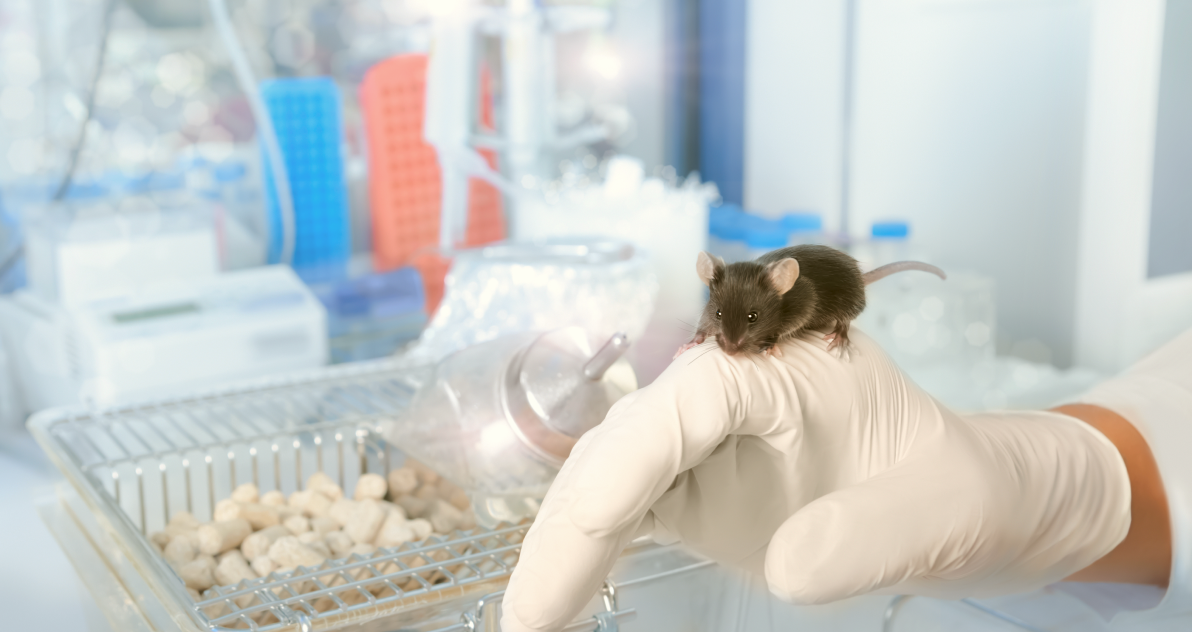
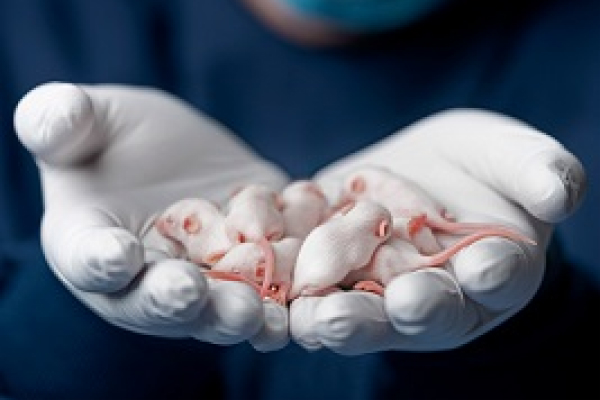

.jpg)


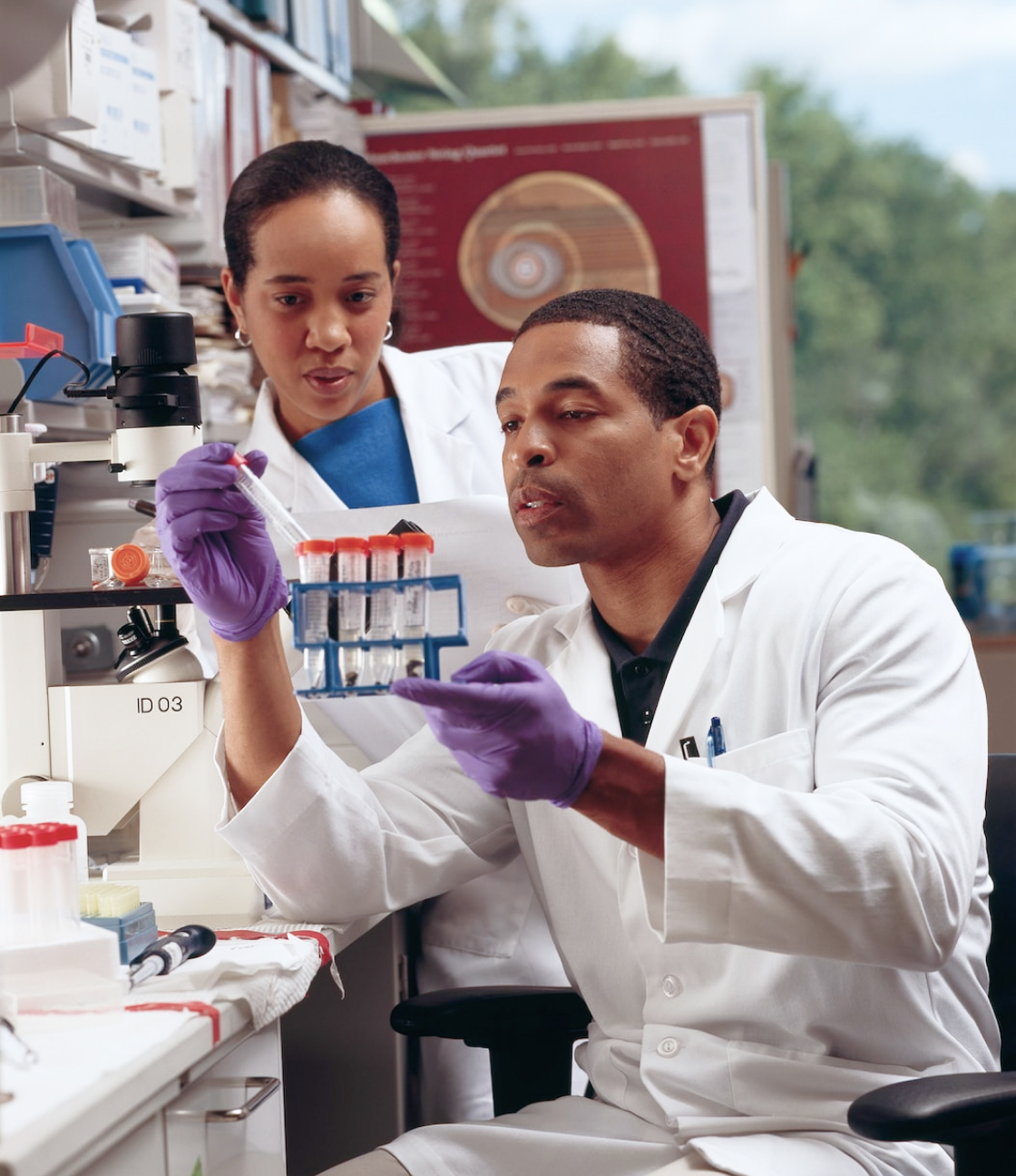

.jpg)

.jpg)
.jpg)
